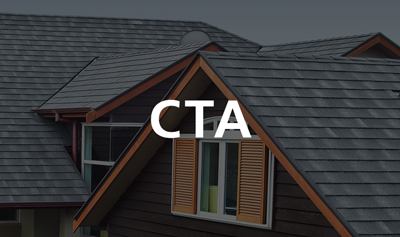-235002-edited.jpg?width=730&name=image(6)-235002-edited.jpg)
When looking at your options for re-roofing your home, you may have heard of the batten system, and have questions around what this is and how it compares with a direct-to-deck roofing method. It’s a worthwhile comparison when needing to choose the best roofing system for your home.
In this article, we will explain what the batten system is, the benefits it provides, and how it compares with using a direct to-deck system.
To talk to an expert about the best choice for your re-roofing project
WHAT IS A BATTEN SYSTEM, SITTING OVER SHEATHING VENTILATION?
In a batten system, wooden battens are applied over sheathing ventilation, to the roof either horizontally or in both directions in a grid pattern, known as a counter-batten system. The battens then provide the fixing point for roofing materials, such as metal tile roofing.
Installation of metal tile roofing over a batten system, allows airflow under the tiles and, as a result provides better ventilation. The air space resulting from a batten system works well for a cool roof design and for heat dissipation. By installing a batten system above sheathing ventilation you achieve higher energy efficiency. The air space below the metal tile roof heats up, rises to the ridge and escapes out before it has a chance to enter the attic. This air movement serves to keep the home cooler.
Oakridge National Lab recently conducted a report on entitled The Tradeoff Between Solar Reflectance and Above-Sheathing Ventilation for Metal Roofs on Residential and Commercial Buildings. This report in summary states that the air space below the metal tile roofing in a batten system, is better than having a cool roofing rated asphalt shingle. It explains that this air space heats up, rises to the ridge and escapes out before it can enter the attic. This air movement keeps the home cooler than even the best cool roof asphalt shingles.
A perhaps surprising, and certainly interesting, outcome from the report, is that the darker the colour of the metal roof, the faster the air moves - so when it comes to above sheathing ventilation a darker colour performs more effectively than a light one.
Another key to understanding how metal tiles on a batten system produce a cooling affect is to look at the outside temperature and how it affects heat transfer.
As the sun goes down the temperature of the metal tile roofing drops at the same rate as the outside temperature. Using your car is an example that you might relate to. When the sun goes down on a hot sunny day the temperature of your car cools off quickly, but you’ll notice that the roads and sidewalks remain hot well into the night. The same is true with metal tile roofing on battens. As the sun goes down the temperature of the roofing drops and the air between the battens moves to the ridge and out of the system.
Metal tile roofing on a batten system is also very effective in the lower temperatures at night and in the winter. The airspace insulates the roof from the outside temperature. The warm air in the airspace circulates to the eaves and rakes reducing ice damming. And if you use Tilcor metal tile roofing, the back side or underside of the panels are shiny and reflective. It reflects heat from exiting the attic, back down, which helps keep the home warmer in the winter.
It is an effective way of keeping your home cooler in the summer and prevents ice damming in the winter.
-261641-edited.jpg?width=730&name=image(5)-261641-edited.jpg)
THE BENEFITS OF A BATTEN SYSTEM SITTING OVER SHEATHING VENTILATION
From what you have already read you will have seen that there are certainly benefits to using a batten system over sheathing ventilation.
Here we list a few of the benefits of a batten system:
- Reduces the stress on the HVAC System
- Reduces heat gain in attic
- Reduces ice damming
- Reduces heat loss in winter and heat gain in Summer
- Insulation can be added between the battens – above the deck – to increase thermal insulation and reduce energy use.
- SOL-R-Skin combines the qualities of a roofing underlayment with thermal and fire characteristics of thermal insulation (one product that replaces two).
BATTEN SYSTEM VS DIRECT TO DECK
Batten systems have 1 ½” of continuous air space from eave to ridge, which lets hot air out and prevents it from entering the attic, in comparison to direct-to-deck profiles only having up to 1” and it tapers down to nothing.
Batten systems only have 47 fasteners penetrating the underlay per square, whereas other direct-to-deck profiles have up to 200.
Batten systems have higher wind uplift ratings than direct-to-deck profiles. This is due to the metal tile roofing being nailed vertically up the roof in the nose of the panel, allowing for very high wind uplift ratings. Direct-to-deck profiles are fastened from the top down. The technology for nose fastening batten products has been around since 1957 and the technology has been proven around the world in all climates.
Maintenance on a batten system is easier than direct-to-deck panels, as batten profiles like our Craftsman Shake profile at Tilcor, are very walkable and metal tile panels anywhere on the roof can be easily replaced, repaired or removed for adding solar panels or equipment. Direct-to-deck profiles need to pull panels out from the ridge down, to repair, replace or remove a panel to add solar panels.
------------------------
Contact our team of Tilcor roofing experts. Contact our team of Tilcor roofing experts.


.jpg?width=730&name=image(9).jpg)








